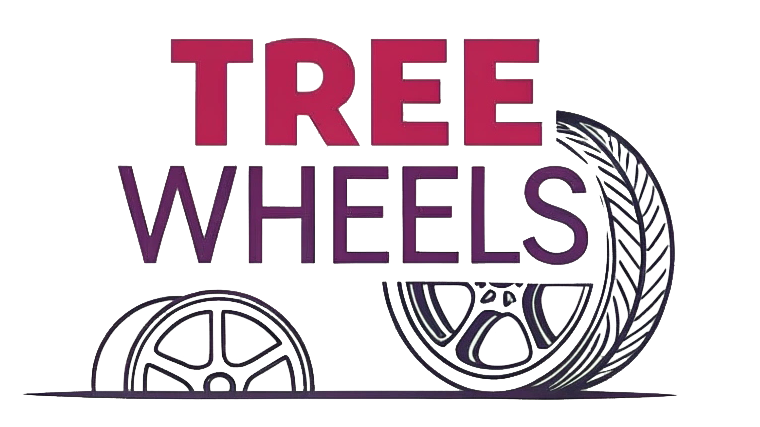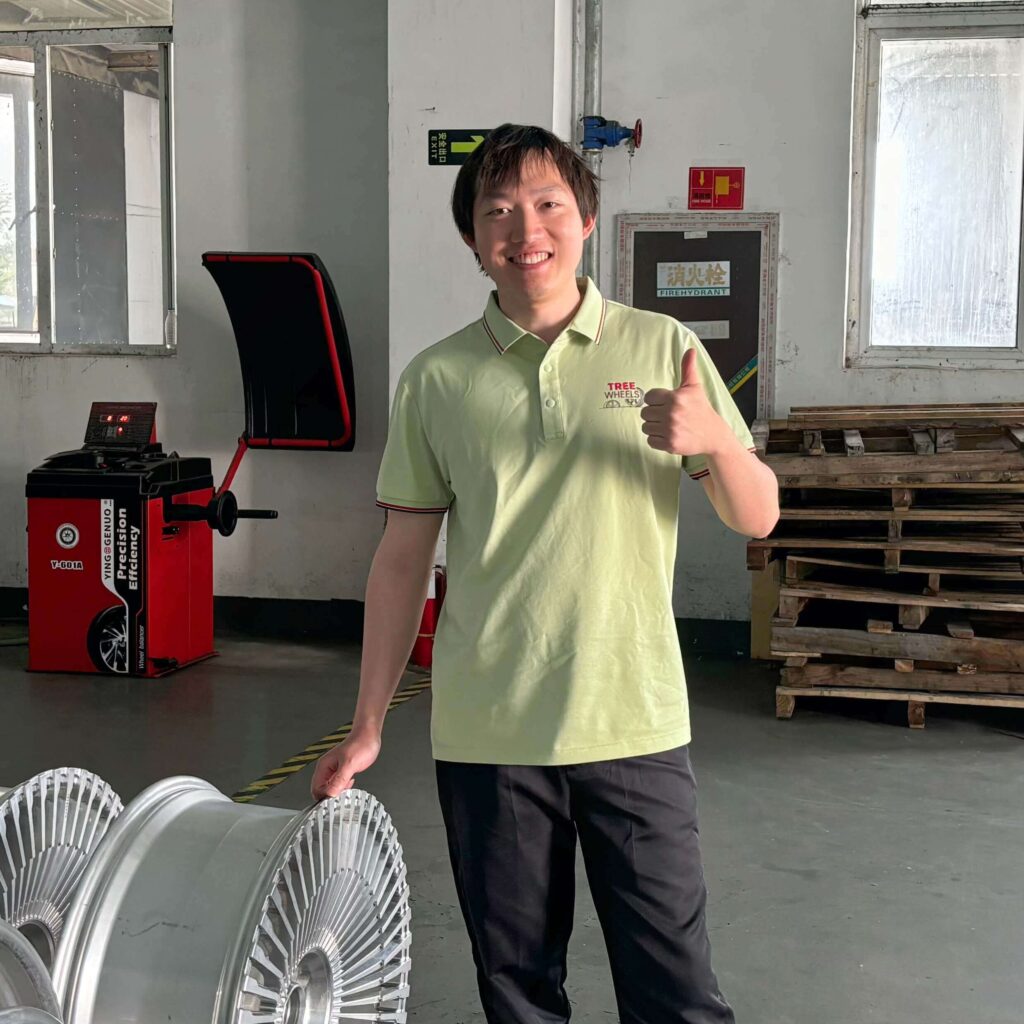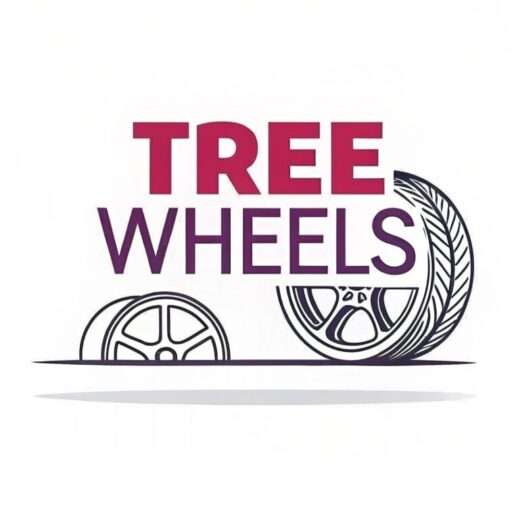When customers talk about rims, they usually mean the whole metal part of the wheel without the tire. But that’s not exactly right.
Rims are just the outer edge of a wheel, while the wheel includes the full structure that connects to the car and holds the tire.

It’s easy to mix these two terms up, especially since even car lovers and professionals use them interchangeably in casual talk. But when accuracy matters—like in production, design, or international trade—we need to know the difference. Here’s how I explain it to clients who are ordering customized forged wheels from Tree Wheels. Let’s break it down.
Are rims the same as wheels?
People often think “rims” and “wheels” are two names for the same thing. That’s a common mistake.
No, rims are not the same as wheels. The rim is only a part of the wheel—the part that the tire mounts onto.

When we say “wheel,” we’re talking about the entire metal structure that includes the rim, the spokes, the hub, and other parts that let the tire attach to the car. The rim is just the outer circle that holds the tire in place. In the aftermarket industry, customers often say “rims” when they really mean the full wheel. I used to do the same before I got into this business. But once I started working with manufacturers and handling CAD files, I realized how different these terms really are.
The Structure of a Wheel
| Component | Function |
|---|---|
| Rim | Holds the tire, gives bead support |
| Spokes | Connect the rim to the hub, affect strength and design |
| Hub | Mounts the wheel to the car |
| Barrel | Inner section between rim and hub |
| Center Bore | Fits over the axle hub |
Each of these parts must be considered when designing a forged wheel. If you ask a manufacturer to customize a “rim,” they might only work on the outer profile. If you want the whole design altered, ask for a “wheel.”
Why are wheels not called rims?
This mix-up comes from car culture and how people talk, not from technical facts.
Wheels are not called rims because “rim” refers to a specific part of the wheel, not the whole structure.

When car shows or ads mention "20-inch chrome rims," they're using the term the way most people do. But in the manufacturing world, rims are just one piece. When I worked on wheel drawings, the first thing engineers explained was: “Don’t confuse rims with wheels.” That stuck with me. If you want a full custom job—size, offset, color, spoke style—you need to talk about wheels, not just rims. Otherwise, you might end up with only the outer profile changed.
Marketing vs. Manufacturing Language
| Context | Common Term Used | Actual Part Referred To |
|---|---|---|
| TV Commercial | “Rims” | Whole Wheel |
| Online Auto Shop | “Wheels” | Whole Wheel |
| Factory Drawing | “Rim” | Outer edge only |
| Design Request | “Wheel” | Whole structure |
This chart shows how the word “rim” is used more for show, while “wheel” is used more for accuracy. The confusion comes from how companies try to sell products versus how engineers build them.
Do you say wheels or rims?
It depends on who you’re talking to and what you’re talking about.
Use “wheels” when you mean the full assembly that bolts onto your car; use “rims” only when talking about the outer lip.

When customers from the U.S. ask for a quote on “chrome rims,” I always confirm what they really mean. Most of the time, they’re looking for full forged wheels with custom color or finish. So I say, “Just to be clear, you want forged wheels without tires, correct?” That one sentence avoids a lot of back and forth. If you’re in sales or production, I suggest always confirming the exact part. It helps manage expectations and avoid mistakes in design, cost, and delivery.
What People Usually Mean
| Phrase | What They Probably Want |
|---|---|
| “I want 20-inch rims” | 20-inch wheels without tires |
| “Can you customize my rim?” | A full custom wheel job |
| “I scratched my rim” | Damage to outer lip of wheel |
| “These wheels look great” | Complete aftermarket wheels |
When you’re working in B2B, especially in different countries, being clear with terms saves time and builds trust. I’ve seen deals fall apart just because the product spec said “rim” and the client got only the outer part instead of the full wheel.
What is the proper term for rims?
If we’re being accurate and using industry standards, the word “rim” has a very specific meaning.
The proper term for the whole metal piece that holds the tire is “wheel.” “Rim” means only the outer edge.

In forged wheel production, precision matters. When I’m speaking with a factory engineer or submitting a 3D drawing, I always say “wheel.” We break down the design into rim size, PCD, offset, and spoke shape. If I just said “rim,” they’d probably come back asking what part I’m referring to. For clients ordering custom pieces from Tree Wheels, I make sure our catalogs, quotes, and drawings all use the word “wheel” unless we’re only modifying the outer edge.
How to Use Terms Correctly
| If You Mean | Say This |
|---|---|
| Whole metal part | “Wheel” |
| Outer circle where tire sits | “Rim” |
| Full setup with tire | “Wheel and tire assembly” |
| Just the edge got scratched | “The rim is damaged” |
Correct terms help everyone work together better—designers, factories, and clients. It also helps when we talk to certification bodies like ISO or DOT, who look for proper labeling and documentation.
Conclusion
Rims are part of wheels, but not the whole thing. Use the right term for clear communication.
Tree Wheels: Custom forged wheels made for real car pros—fast, accurate, and built to fit.



